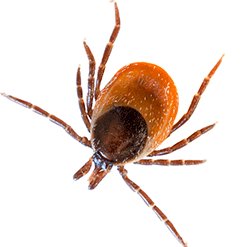Topical Treatments
Flea and tick collars only repel insects from the head and neck, but topical medications like Frontline and Advantage can be applied to your pets once a month to repel ticks and fleas over their entire bodies and kill off those that are already attached. Make sure that you observe instructions for application. These medications require different doses by weight, and can also be reapplied at different time intervals. Don’t use them on puppies and kittens under six weeks old.
Flea or tick repellent shampoo is another topical option. These products can help remove fleas from animals and repel them in the future. The active ingredients in these shampoos only last for around two weeks, however, making this a labor-intensive option for flea and tick control, but it can be a good treatment to add to an arsenal of multiple methods.
Unfortunately, many pets become stressed when they’re bathed, so you’ll have to gauge how often you’ll be able to use the shampoo. If your pet has been trained to withstand regular bathing, give them a bath using medicated shampoo at least every week, or each time you’re finished combing and manually removing ticks.
Keeping your house clean should be done whether you’re preventing a tick infestation or trying to get rid of one. However, this isn’t the only indoor treatment you should be using. While there are sprays for your yard and pets, there are also indoor pesticides that you can use among the hiding spaces in your home. These usually aren’t recommended to be used directly on carpets and furniture, but you can use a pesticide sprayer on the following areas:
- Around baseboards on your walls
- Along window and door cracks
- Along the corners of your rooms along the floors and ceilings
- Inside any cracks and crevices in walls
Tick insecticide dusts can be sprinkled along carpets and rugs to kill off any ticks. This lends itself to easy cleanup as well, since you can vacuum up the dust after it’s had enough time to be effective. By using a dust and not a spray, you won’t have to deal with any residues or strong odors.
For a natural alternative, you can use diatomaceous earth on your carpets. This product is available online and is made up of fossilized remains, which are slightly abrasive and can tear up small insects’ skeletons. Food-grade diatomaceous earth is perfectly safe for humans and pets and just feels like a lumpy powder. It is completely non-toxic and can also be vacuumed up after use, just as what you would do with insecticide dust.






